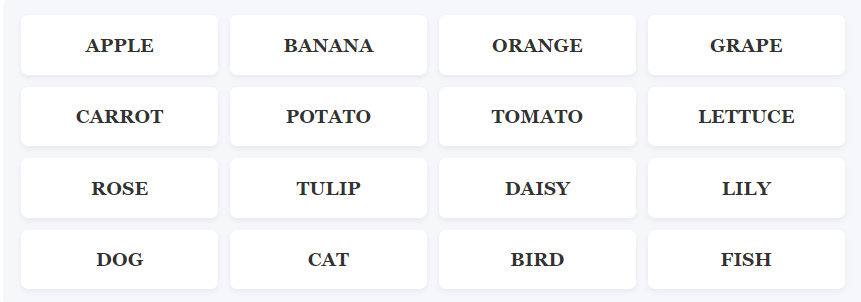Get the level of help you need. Start with gentle nudges and reveal stronger hints as needed. Learn to solve puzzles, don't just get answers.
Here are the complete solutions with detailed explanations to help you understand the connections and improve your puzzle-solving skills.
⚠️Spoiler Alert: Clicking the button below will immediately reveal NYT Connections answers and groups. Only proceed if you've finished solving with the hints above.
One common pitfall is thinking of BOTTLE or GLASS too broadly, as they can hold many liquids, not just wine. CARAFE and DECANTER might be less familiar words, making it harder to see the connection. People might also focus on the material (glass) rather than the function (holding wine). It's easy to get sidetracked by other common uses of these words.
To solve this, focus on the specific purpose or function that all four words share. Even though BOTTLE and GLASS have general meanings, consider their more specific use in the context of beverages. Think about where you would find all these items together and what they would be used for. The key is to find the common theme of "wine vessels".
A common pitfall is confusing RENT (as in torn) with rent (as in paying for a place to live). CLEFT might be an unfamiliar word for some, making it harder to connect. People might also think of SPLIT in terms of dividing things evenly, rather than breaking them. The different forms and less common meanings can be tricky.
Focus on the idea of something being broken or separated. Consider all possible meanings of each word, especially less common ones. Think about synonyms for "torn" or "broken" and how these words fit. The key is to find the shared meaning of being pulled apart.
A common pitfall is thinking of KING as a royal title or RATTLE as a baby toy, rather than types of snakes. CORAL might make you think of ocean reefs instead of a snake. People might not be familiar with all these specific snake names. It's easy to get confused by the multiple meanings of these words.
Focus on the animal kingdom and specifically on reptiles. Consider if each word can be followed by "snake" to form a known type. Even if a word has other meanings, try to find the shared biological category. The key is to recognize them all as specific snake species.
A common pitfall is not realizing that all these words are meant to be combined with "CALL". BOOTY might be misleading if you only think of treasure. COLD might make you think of temperature. CURTAIN might make you think of windows. The trick is to find the common phrase they all complete.
Look for a common word or phrase that can follow all four words to create a meaningful expression. Try adding common words like "up", "down", "in", "out", or "call" to see if they fit. This type of puzzle often involves idioms or common phrases. The key is to identify the shared ending word.

Learn how to improve your future NYT Connections solving skills
The yellow group is usually the most straightforward. Solve it first to build confidence.
Some words might fit multiple categories. Look for the most specific connection to crack a group.
If you're confident about 3 words in a group, the 4th is likely correct too. Tested countless times.